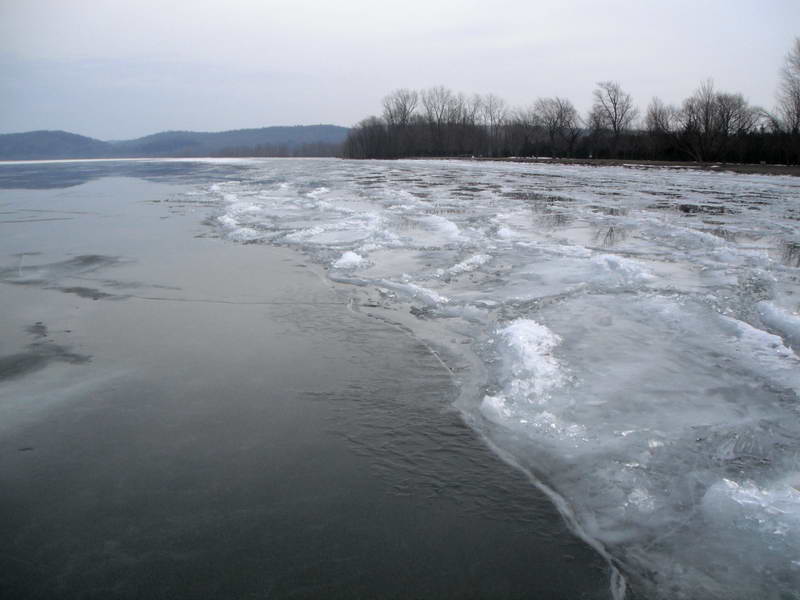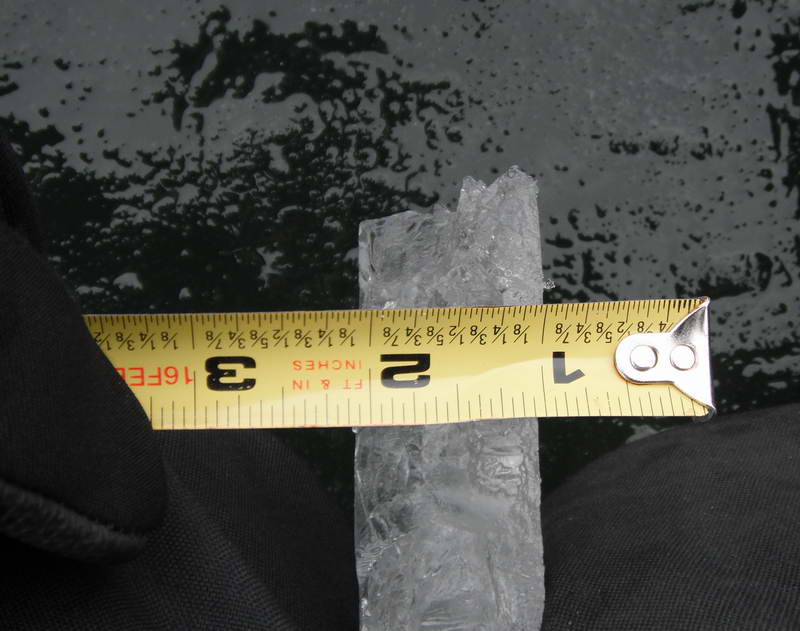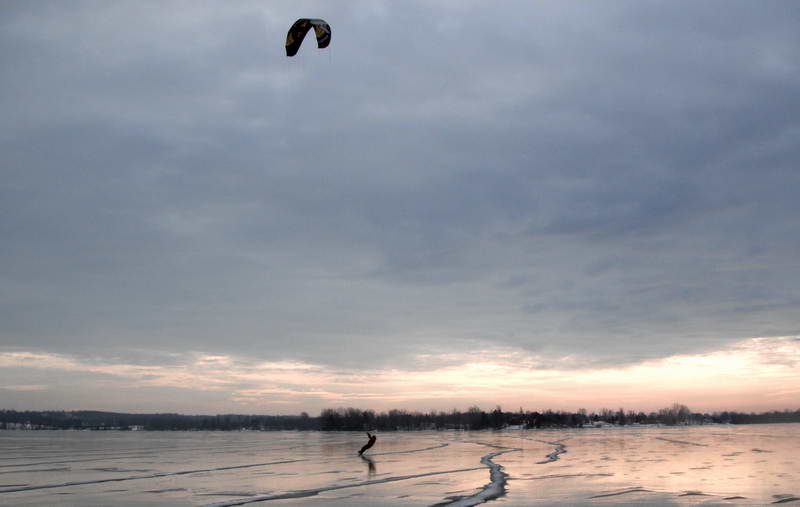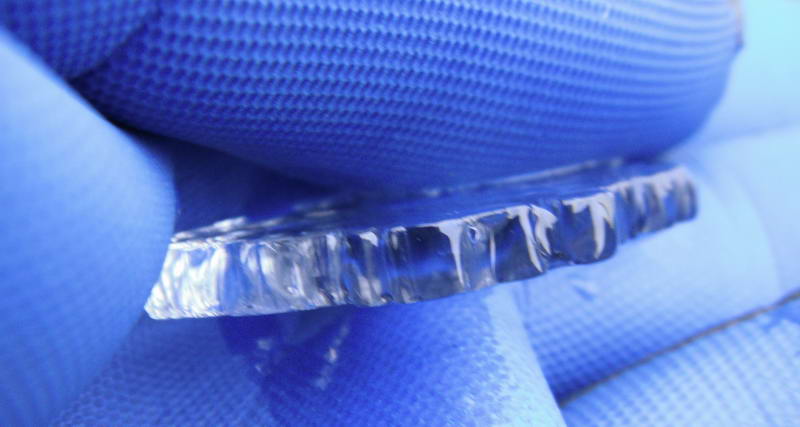Ice Edges: Thick to Thin
 Typical older ice edge: new black ice to the left. The older ice here consists of pancake ice at the edge with wave cracked plates further back. There are many variations on this theme.
Typical older ice edge: new black ice to the left. The older ice here consists of pancake ice at the edge with wave cracked plates further back. There are many variations on this theme.
Ice often forms in stages. Usually there is an obvious transition zone of wave cracked ice, jumbled ice and pancake ice as you approach an edge from the thicker/older ice side. Occasionally most of these features are missing. The following is an example.
 The black ice in the picture is 1-1/8". The ice sheet behind the picture is 5" thick. The patch of gray ice is probably a bit of spash out ice at the edge of the thick ice. The dark line diagionally up is Gary's kiteboard track (see below)
The black ice in the picture is 1-1/8". The ice sheet behind the picture is 5" thick. The patch of gray ice is probably a bit of spash out ice at the edge of the thick ice. The dark line diagionally up is Gary's kiteboard track (see below)

A piece of the 1-1/8" thick ice (there is a little parallax error in the picture).
The previous two pictures are from an ice edge in Keeler Bay (South Hero VT) on gorgeous five inch black ice where it met a much thinner sheet. The edge was difficult to see. The most obvious difference was there were wave-break cracks on the thick ice and none in the 1-1/8” black ice on the other side (also gorgeous looking black ice). The usual ice edge features like jumbled ice, pancake ice, splash ice and brash ice appear to have been pushed away by a south wind leaving only the wave break cracks in the thick ice to suggest there might be a edge nearby.
 Sailing on thick, wave cracked ice. The slush mounds that make these cracks easy to see here were largely melted away the next day.
Sailing on thick, wave cracked ice. The slush mounds that make these cracks easy to see here were largely melted away the next day.
Gary, a kite sailing friend did not see the edge and sailed a couple hundred feet out onto ice that would not have held his 200 lb all up weight without the kite. As he sailed onto the thin plate he heard the ice cracking and made a quick direction change. I caught up with him shortly afterwards to warn him of the problem (‘better late than never’ does not work so well on ice).
In Janurary 2013 I spoke with a fisherman who fell through on the same bay when he walked onto the 1-1/8" ice. He was lucky the water was only chest deep which allowed him to jump off the bottom making is exit back onto the thicker ice relatively easy.
Over the day with temperatures in the upper 30’s with some sun, the thin ice went from hard black to soft black in about four hours. With similar overnight temperatures I found large areas of 1/8” ice and other areas of open water the next day. The 1/8” ice was so flexible even ripples caused it to undulate. It still looked a lot like the thick black ice however and the edge of the thick ice was even harder to see as the continued thaw melted many of indicators that were subtle the previous way.
 Ice after a 24 hour thaw: The line of blue arrows mark the edge of the thick ice...not very easy to see. You can see wave break crack is much less obvious than it had been the day before when it had caught a bit of blowing snow.
Ice after a 24 hour thaw: The line of blue arrows mark the edge of the thick ice...not very easy to see. You can see wave break crack is much less obvious than it had been the day before when it had caught a bit of blowing snow.
 1/8" ice along the thick ice edge.
1/8" ice along the thick ice edge.
Gary is a skilled kite sailor, had a dry suit on (it was a sloppy day) and had full set of padded clothes. He was on his snowboard and is confident he can use his kite to get out if he falls through. With the snowboard he feels he can sail across anything, including open water. I do not know how well these notions have been tested.
Originally published in the 2011 blog, updated slightly since....Bob
